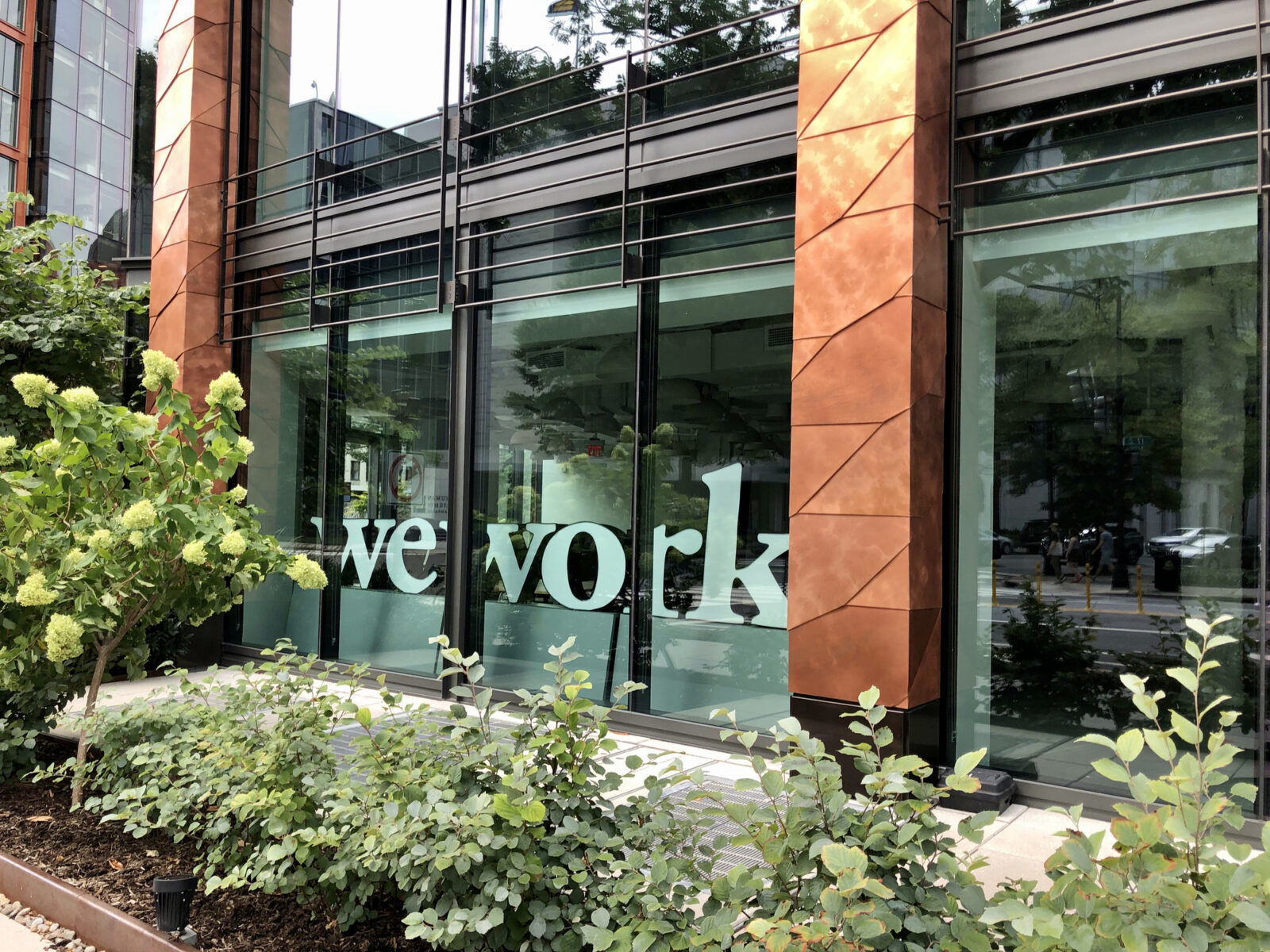There have been enough news stories and video depictions of WeWork’s history to make us think of one of two things. First, that image of crazy founder Adam Neumann and his wife blowing multi-millions in startup money and flushing an interesting and burgeoning business model. However, the second and more recent reality of the once-behemoth co-working company leads us to believe that, on its ninth life and emerging from bankruptcy, WeWork in 2024 is no longer a viable business model.
There are still two WeWork locations in downtown Detroit, one on Clifton and one in the heart of Midtown on Woodward. While I have yet to have first-hand knowledge of how those locations are performing today, I have used the Woodward location in past years for meetings, and even then, it was only half full. Despite my perception, the co-working model, for good and bad, is still omnipresent in the Detroit area. Still, with fewer branded and independent spaces, you can rent in Royal Oak, Troy, Brighton, Ferndale and Birmingham. Some even have audio podcast studios you can pay for, but even that innovation has become dated, with everyone seemingly moving to video.
The concept of co-working spaces didn’t just emerge from the pandemic when people searched for locations to get them out of the house. You can go back to the early 2000s when entrepreneurs, job seekers, and working seniors flooded coffee shops like Starbucks and fast-casual restaurants like Panera.
The Early Days of Co-Working Spaces
I started a marketing and public relations agency in 2005. Before I signed a lease on a new space, I interviewed potential employees at various Panera locations across the metro Detroit area. The first guy I interviewed went to the counter and picked up a sandwich before seeking me out at my “office desk.” He ate his sandwich during the entire interview. Yeah, I hired him anyway.
But as many of you who used to use these locations for “work” probably know, companies like Panera and Starbucks quickly made things very uncomfortable for their squatter-like customers armed with laptops. Panera started limiting its Wi-Fi use at peak times to two hours (in addition to jacking up its food prices), and Starbucks, among other coffee shops, started removing tables and replacing them with couches and extremely uncomfortable furniture that reminded me of grade school, to make sure people stopped camping there.
Co-working branded spaces like WeWork started dotting the urban and suburban landscape in the mid-2000s. While there appeared to be a co-working space seemingly on every block in U.S. cities and metro areas, in 2024, there are fewer spaces to choose from and the work environment and clientele have changed dramatically.
The Clientele Has Changed Post-COVID
As recently as five years ago, I couldn’t walk into a coffee shop or co-working space without hearing insurance pitches and job interviews shared by sometimes well-meaning but annoying and loud patrons. Now? Not only have the demographics shifted, but so has the decibel level.
Most co-working spaces are now flooded with remote-working Gen Z patrons because they say they want to get out of the house, meet people, and not feel alone. However, they seem to have a unique way of achieving that goal. The people you see today in these facilities have their ever-present earbuds in place, shutting themselves off from the people around them. Don’t say hi or ask a question; they can’t hear you while creating the same quiet and solo space they could have performed in their apartments or homes.
In 2024, people have found that co-working spaces and online video tools are a poor replacement for workplace mentoring and collaboration. And while the coffee shop and co-working crowd is getting younger, things are getting a bit weirder.
There are stories detailing how, since the pandemic, remote co-working clients may have altogether forgotten how to work and behave around people. I have a friend who created a beautiful co-working space in the Detroit suburbs about eight years ago, adjacent to another business she maintained in the same building. Things began well and then COVID hit. While her business initially survived the pandemic, she eventually could not survive the co-working clientele that emerged after. She told me she ended up spending much of her profits on lawyers to fend off sexual harassment claims made by her female employees, who were constantly accosted by the co-work space clients. Independent co-working locations don’t have HR departments. My friend decided to shut down the co-working space altogether earlier this year.
The Model is Broken
Coming out of its bankruptcy, its investors say WeWork has become a smaller and more fiscally sound company. However, the model, which had new life in a post-pandemic remote work environment, may be broken forever. Each week, more and more companies are telling their people to return to the office, if not full-time, on a hybrid schedule. And many are going back willingly. Younger employees, who started the digital nomad craze in the U.S. and worldwide, eventually missed the connection with co-workers, mentoring, collaboration and camaraderie that comes from working in the office. They’ve also realized that downsizing companies tend to choose remote people first because they don’t have a personal relationship with them.
As reported in the monthly Survey of Working Arrangements and Attitudes, younger workers miss collaboration and view full-time remote work as isolating. Among workers ages 20-29, 76% say they do not want full-time remote work, while 71% of workers ages 30-39 say the same.
While some believed that remote work would be a boon for companies like WeWork and its more expensive cousin, Regus, workers are increasingly not only asking to go back to work but becoming more engaged in the companies they left initially to stay home and play with their dogs, cats and pandemic babies.
Say what you will about WeWork’s financial issues, but its model was never about “we;” it was more about “me.” It’s refreshing to see people wanting to go back to the office and to see how companies are thriving with a new and energized workforce who want to be part of helping something beyond themselves thrive again, while boosting their career path in the process.





